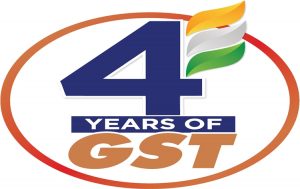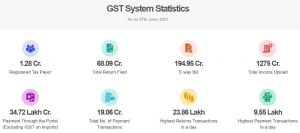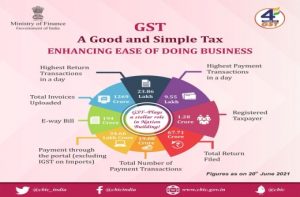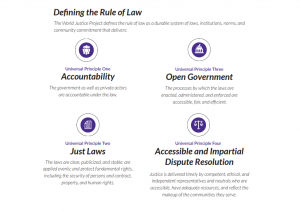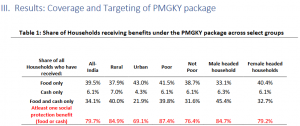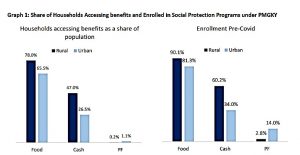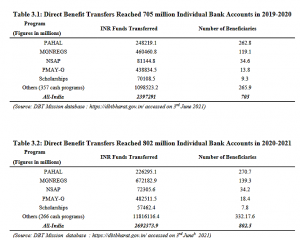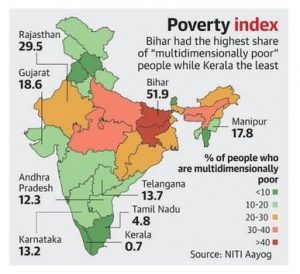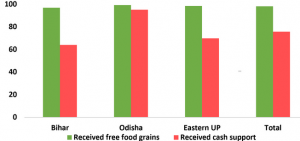BIMSTEC NEEDS TO REINVENT ITSELF
THE CONTEXT: The 17th Bay of Bengal Initiative for Multi-sectoral Technical and Economic Cooperation (BIMSTEC) ministerial meeting was held on 1 April 2021. Though the grouping is ready to move forward, a number of obstacles stand in the way of this, including regional tensions, uncertainties surrounding SAARC, and China’s involvement in the multilateral.
ABOUT THE RECENT BIMSTEC SUMMIT
The 17th Ministerial virtual Meeting of BIMSTEC leaders was held on April 01, 2021. Here are the major outcomes of the summit;
- India’s commitment to further building the momentum of regional cooperation under the BIMSTEC framework and making the organization stronger, vibrant, more effective, and result-oriented.
- India is the Lead Country to Counter Terrorism & Trans-national Crime, Transport & Communication, Tourism, and Environmental & Disaster management.
- BIMSTEC Master Plan for Transport Connectivity for adoption at the next BIMSTEC Summit and three MoUs / Agreements for signing at the next BIMSTEC Summit.
- Member States to complete their internal procedures for adoption of the BIMSTEC.
- Chair to hold the Fifth BIMSTEC Summit in Sri Lanka.
- BIMSTEC Centre for Weather and Climate, being hosted in India, is fully functional with the state of the art facilities to provide Disaster Early Warnings.
ISSUES FACING BY BIMSTEC IN RECENT TIMES?
BIMSTEC is facing several issues in recent times. Those are posing challenges to the grouping. Major challenges are as follow:
THE ISSUE OF MEETING:
- While most multilateral groupings from G20 to ASEAN and SCO held their deliberations at the highest political level in the midst of the COVID-19 pandemic in 2020, BIMSTEC leaders failed to do so.
- In contrast to a meeting of even SAARC leaders held at India’s initiative a year ago, BIMSTEC could not arrange its ministerial meeting until April 2021.
ISSUES BETWEEN THE MEMBER STATES:
- A strong BIMSTEC presupposes cordial and tension-free bilateral relations among all its member-states.
- This has not been the case, given the trajectory of India-Nepal, India-Sri Lanka, and Bangladesh-Myanmar ties in recent years.
THE ISSUE OF SAARC:
- Uncertainties over SAARC hovers, complicating matters.
- Both Kathmandu and Colombo want the SAARC summit revived, even as they cooperate within BIMSTEC, with diluted zeal.
CHINA PRESENCE IN SOUTH ASIA:
- China’s decisive intrusion in the South-Southeast Asian space has cast dark shadows.
- It is believed that BIMSTEC would make progress if China is accepted as its principal interlocutor and partner. This perspective has hardly any takers in India and its friendly partners in the grouping.
MILITARY COUP IN MYANMAR:
- The military coup in Myanmar, brutal crackdown of protesters, and continuation of popular resistance resulting in a protracted impasse have produced a new set of challenges.
WHY BIMSTEC IS FACING THESE ISSUES?
LACK OF RESOURCES:
- Despite its huge potential, the forum has long suffered from a lack of resources and proper coordination among its member states.
- Many factors have contributed towards the sluggishness of BIMSTEC and it is still beset with difficulties.
- India, its largest member, has often been blamed for not providing strong leadership.
- Consequent to the slow progress of its mandate, Thailand and Myanmar have often seen ignoring BIMSTEC for ASEAN Forum.
LACK OF PROPER MEETINGS:
- The relevance of BIMSTEC as an organization can be gauged from the fact that only four meetings have been held since its inception 21 years back.
- It took seven years for its first summit to take place in 2004 in Thailand; the second one was held four years later in 2008 in India; the third one six years later in Myanmar in 2014 and the fourth summit has just concluded in Nepal on 31 Aug 2018.
- It also took 17 long years for this Forum to establish its permanent secretariat in Dhaka in 2014.
LACK OF ECONOMIC COORDINATION:
- The organization currently faces the challenge of realizing its vision of an integrated economic space and a bridge between South and Southeast Asia that drove its founding members.
- The BIMSTEC Free Trade Agreement (FTA), signed in 2004, is yet to be implemented.
- The protectionist economies of South Asian countries and so-called national interests are making free trade an unattainable objective.
- Countries like Bangladesh on the other hand, often fear that whenever India discusses connectivity, it means benefits only for India.
- Such fears & apprehensions question the basic fabric of BIMSTEC and foster mistrust, thus blighting any prospect of free movement of goods.
ADMINISTRATIVE ISSUES:
- BIMSTEC Secretariat, established in 2014 in Dhaka, has been unable to adequately contribute to the development of the organization, and its negligible budget affects its capacity to perform a basic convening function.
ROHINGYAS FACTOR:
- The Rohingyas factor emerged as a major issue.
- Their refugee crisis has complicated relations between Bangladesh and Myanmar, may affect BIMSTEC’s multilateralism in the future, and completely derail its efforts to foster regional cooperation.
MISUNDERSTANDING BETWEEN MEMBERS:
- Another challenge lurking in the forum is the impression that it is an India-dominated bloc, a problem that India faced for a long time in SAARC too.
- This perception of Indian hegemony, coupled with the over-dependence of BIMSTEC Countries, on China, seems to be a major impediment to this Forum’s success.
- Nepal’s pulling out of the ongoing BIMSTEC military exercise being conducted in India probably substantiates this point.
- The underlying aspiration of China to be part of BIMSTEC, on the same lines as it harnesses a desire to be a permanent part of SAARC groupings, further aggravates the problem.
PRESENT DYNAMICS & RENEWED INITIATIVE
However, two recent developments have generated renewed hopes for BIMSTEC to forge an effective regional group for broader economic integration.
- First was the Outreach Summit, held in Goa, India in October 2016, wherein the BRICS-BIMSTEC leaders pledged to work collectively towards making BIMSTEC stronger. This Summit, brokered by India, has certainly reinvigorated BIMSTEC by inviting its members to participate in a larger platform like BRICS, comprising five major emerging economies of the world.
- The second is the concluded Fourth summit of BIMSTEC at Kathmandu from August 30 to 31, 2018. The theme of the summit was ‘Towards a Peaceful, Prosperous and Sustainable Bay of Bengal Region. Representatives of all member nations explicitly showed their renewed desire to forge ahead on mandated objectives with the signing and adoption of the Kathmandu Declaration.
THE ANALYSIS
- The 18-point Declaration is expected to enhance the effectiveness of the BIMSTEC Secretariat by engaging it in various technical and economic activities in the region. Foreign ministers of BIMSTEC countries signed a Memorandum of Understanding on the establishment of BIMSTEC Grid Interconnection.
- The Declaration stresses ending poverty in the region by 2030 & strongly condemns terrorism in all its forms and manifestations. It covers issues such as agricultural technology exchange, gradual reduction of the impact of climate change, increased trade and investment, and ease in visa processing for the people of member states. It also highlights the importance of trade and investment as one of the major contributing factors for fostering economic and social development in the region.
- It now remains to be seen as to how all the seven members can take this momentum forward in making BIMSTEC more ‘effective’, ‘visible’ and ‘result-oriented’ as well as draw synergies with other groupings to hasten the process of integration for the benefit of 1.6 billion people in the region.
RELEVANCE OF BIMSTEC FOR INDIA
- For India, BIMSTEC stands at the very important juncture of ‘Neighborhood First’ and ‘Act East Policy. Its relevance to India is driven by two key factors, one, the potential economic rewards of greater regional connectivity it provides. Second, the rapidly changing geostrategic context of Asia and India’s need to look at the Bay of Bengal as a key theatre for containing an increasingly capable and assertive China.
- BIMSTEC, unlike SAARC’s subcontinental focus, is the only forum that brings together India’s strategic peripheries under one single grouping. Regional integration comes more naturally to India through BIMSTEC vis-a-vis SAARC, which is dominated and hamstrung by tensions between India and Pakistan. BIMSTEC also allows India to push a constructive agenda to counter Chinese investments.
- Three projects pending with BIMSTEC, when finished, are likely to transform the region, especially India.
- Kaladan Multimodal project linking India and Myanmar: The project envisages connecting Kolkata to Sittwe port in Myanmar, and then Mizoram by river and road. India and Myanmar had signed a framework agreement in 2008 & are yet to be finished.
- Trilateral Highway connecting India and Thailand through Myanmar: The highway will run from Moreh in Manipur to Mae Sot in Thailand via Myanmar thereby establishing connectivity between India and Southeast Asian countries. The project is currently underway.
- The goods and vehicles: were signed in the year 2015 and is, awaiting internal clearances of some members, involves the movement of goods and vehicles. Bangladesh, Bhutan, India, and Nepal (BBIN) have signed this pact. Trial runs are on.
- India has finally realized that the lack of importance given to BIMSTEC can seriously jeopardize its economic and strategic agenda. Consequently, it has committed to re-energising BIMSTEC, which was evident during the BRICS Outreach Summit. This pragmatic step on India’s part lucidly demonstrated its intentions &potential to play the role of a regional leader.
BIMSTEC VS. SAARC: WHICH IS MORE SUITABLE FOR INDIA?
If India wants to prove itself as a regional power, as the largest country in South Asia, India cannot escape its responsibilities under SAARC. The following points explain the differences between SAARC and BIMSTEC. In the end, it can be seen that none of them can substitute for each other. Rather, they can complement each other’s roles.
PARAMETER: VIBRANCY AND DYNAMISM
BIMSTEC:
- BIMSTEC meetings have been held only four times in the last twenty years.
- BIMSTEC meetings are rather considered to be retreats for the leaders of the member nations and there are hardly any talks on policy.
- As of now, BIMSTEC finds vibrancy since India is using it to promote its Act East Policy that aligns with the Look West Policy of Thailand.
- It is argued that India also uses the BIMSTEC platform to substitute SAARC. However, the success of BIMSTEC does not render SAARC pointless; it only adds a new chapter in regional cooperation in South Asia.
SAARC:
- SAARC on the other side is a more active group. Over the last 32 years, ignoring the annual SAARC summits that have been postponed 11 times for political reasons, SAARC has been assiduously nurtured through a multitude of meetings and initiatives, including 18 summits.
- This has seen it evolve a whole set of conventions, organs, and mechanisms and a network of more than a dozen regional centers and other institutions, with a secretariat in Kathmandu.
- Since the SAARC summit has only been postponed, not cancelled, the possibility of revival remains.
PARAMETER: GOALS
BIMSTEC: BIMSTEC’s role is more restricted to the economy and regional integration only.
SAARC:
- SAARC has broader goals compared to BIMSTEC.
- SAARC is aimed at promoting the welfare of the people; accelerating economic growth, social progress, and cultural development; and strengthening collective self-reliance.
- Other objectives include strengthening cooperation with other developing countries and cooperating with international and regional organizations with similar aims and purposes.
PARAMETER: INTRA-TRADE
BIMSTEC: Trade among the BIMSTEC member countries reached six percent in just a decade.
SAARC: In SAARC, it has remained around five percent since its inception.
PARAMETER: CAPACITY OF THE SECRETARIAT
BIMSTEC: The BIMSTEC secretariat faces a severe resource crunch, both in terms of money and manpower, which has adversely affected its performance.
SAARC: SAARC secretariat has more resources. This can be used when SAARC meetings are held.
PARAMETER: COVERAGE
BIMSTEC:
- BIMSTEC is interregional and connects both South Asia and ASEAN.
- BIMSTEC provides SAARC countries a unique opportunity to connect with ASEAN.
SAARC:
- SAARC is a purely regional organization.
- Thus, it is also possible that both the regional organizations can thrive together and even prove complementary in geographically overlapping regions.
CHALLENGES & IMPLICATIONS FOR INDIA
India faces a few challenges which need to be ironed out for the smooth functioning of BIMSTEC. From the strategic perspective, two factors merit as a challenge;
- The first is India’s realization that regional integration in South Asia would work only if Pakistan was not involved. Thus projecting BIMSTEC as more relevant in spite of its overlapping mandate and members with SAARC, appears a daunting task for India.
- The second factor is China’s strategic & economic influence on BIMSTEC members, who can make BIMSTEC hostage to Indo-China regional rivalry. India, therefore, will have to carefully navigate through this emerging regional geopolitics& reassure South Asia that the region can work together to achieve common goals with India playing its due role.
- India is currently the largest contributor to the BIMSTEC secretariat’s budget with an annual contribution of Rs 2 crore (32% of the total budget) for 2017-18. With the secretariat now planning to strengthen its capacity, India may need to consider allocating more resources. India’s generosity would be a key test of its commitment to the subregional grouping.
- Another issue that besets BIMSTEC is that it is an India-dominated bloc. However, due to changing Geo-economics, most of the smaller neighbors today are more willing to engage India due to its economic rise. India needs to proactively engage them and show sensitivity to their concerns.
HOW BIMSTEC CAN REINVENT ITSELF
BIMSTEC as a Forum is well equipped in facilitating this new regionalism. However, its visibility needs to be enhanced for which its member states should:-
- Instill in the organization a vision for a cooperative, multilateral, regional order which is based on principles of liberalism, not on unilateralism.
- Empower the BIMSTEC secretariat with greater financial resources enabling it to proactively drive the organization’s agenda.
- Prioritize sustained physical connectivity and high-quality infrastructure, to facilitate greater regional flows of goods& services.
- India’s role as an informal leader has to be expanded.
- Open BIMSTEC to cooperate with regional powers committed to inclusive regionalism to include Australia, European Union, Japan, and the United States.
CONCLUSION:
BIMSTEC holds the catalytic potential to transform the economies of member states and create a peaceful, prosperous, and integrated neighborhood. The road from potential to reality will be successfully traversed only when all actors and stakeholders come together to play their role well to achieve a shared dream of peace, stability, and prosperity for this dynamic region.
